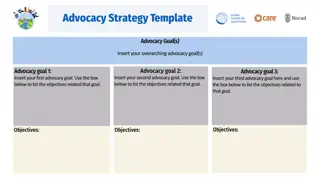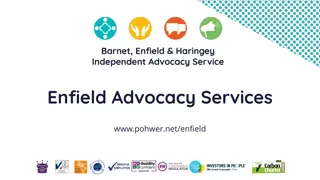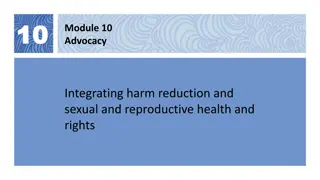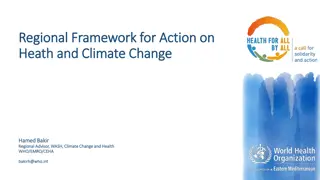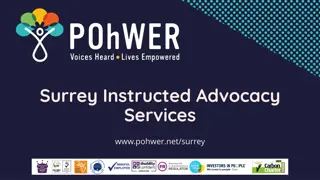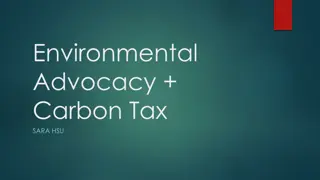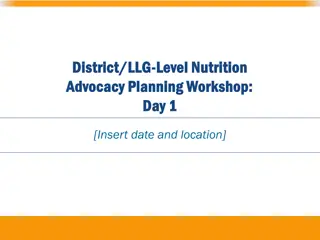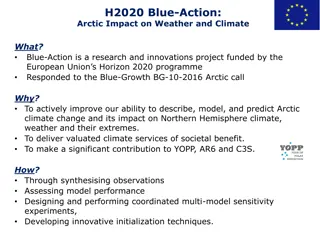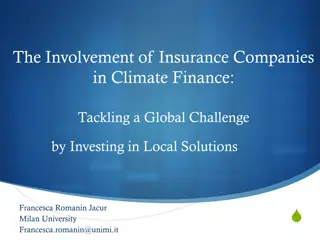Enhancing Climate Education Through Action and Advocacy
Engage students in climate justice through emotional exploration, positive examples, and direct action opportunities. Scaffold communication with public representatives using templates. Empower students to voice opinions and take civic action for change.
Download Presentation

Please find below an Image/Link to download the presentation.
The content on the website is provided AS IS for your information and personal use only. It may not be sold, licensed, or shared on other websites without obtaining consent from the author.If you encounter any issues during the download, it is possible that the publisher has removed the file from their server.
You are allowed to download the files provided on this website for personal or commercial use, subject to the condition that they are used lawfully. All files are the property of their respective owners.
The content on the website is provided AS IS for your information and personal use only. It may not be sold, licensed, or shared on other websites without obtaining consent from the author.
E N D
Presentation Transcript
Scientific Writing Skills for Climate Action Jessica Pikul, Ph.D. South Seattle College
TAKING ACTION WHEN WE TEACH CLIMATE JUSTICE As educators we can teach climate change and climate hope simultaneously by including space to identify and share emotions, provide examples of positive trends or stories, and create opportunities to take direct action. Teaching students how to participate in civic action confidently empowers them to continue using their voice. This creates hope.
SCAFFOLDING COMMUNICATION WITH PUBLIC REPRESENTATIVES 1) After teaching the climate justice topic have students think, pair, share to work together to formulate opinions and make connections to their lives. 2) Provide a template and an example communication letter, opinion, call script. 3) Have students write out their communication. 4) Peer edit and/or Instructor feedback on student work followed by student revisions. 5) Think, pair, share, and larger class discussion what might be hard about sending the letter or making the call? Discuss student anxieties. 6) Students take action mail the letter or make a call. Faculty member takes the same action. 7) Follow with a reflection as a discussion post or small group discussion. 8) When communications come back from representative share out with the class.
TEMPLATE LETTER TO REPRESENTATIVE Dear [TITLE] [LAST NAME], I am writing as a constituent of the [DISTRICT OR REGION REPRESENTED] about [BILL NUMBER IF KNOWN] concerning [ISSUE CONSOLIDATED TO A PHRASE]. I urge you to [STATE SPECIFIC ACTION]. representative to take a specific action. Limit your letter/email to 1 - 3 key points or pieces of evidence. Include a personal story or impact you experience as one of these points. Keep your writing brief and straightforward. Remember, they work for you, you are in a position of power to request action!] [PERSONAL STORY OR SUPPORTING EVIDENCE - Craft supporting information to motivate the As a constituent I urge you to [RESTATE ACTION]. Thank you for your service [OR THANK FOR SUPPORT ON THE TOPIC], [NAME] [ADDRESS]
TEMPLATE CALL TO A REPRESENTATIVE Hello [TITLE] [LAST NAME], my name is [YOUR NAME] I am one of your constituents living in [LOCATION]. I am calling today about [BILL NUMBER IF KNOWN] concerning [ISSUE CONSOLIDATED TO A PHRASE]. As my representative I want you to [STATE SPECIFIC ACTION]. [SHARE SHORT PERSONAL STORY ABOUT HOW YOU ARE AFFECTED BY THE ISSUE note, staff members are unlikely to record information beyond the action you are requesting] Thank you for your service [OR THANK FOR SUPPORT ON ISSUE].



